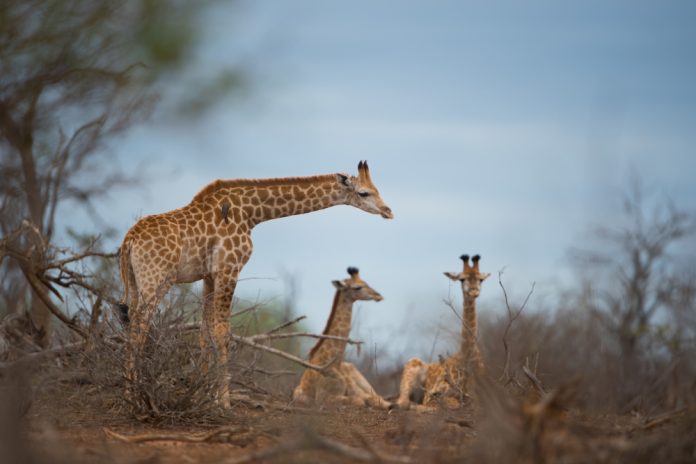The application of cutting-edge technologies in wildlife conservation is transforming how we understand, monitor, and protect biodiversity. These technologies not only enhance our ability to gather precise data but also empower conservationists to implement more effective and sustainable strategies. There are some very promising technological innovations that are revolutionising wildlife monitoring and conservation.
Remote sensing technology, utilising satellite imagery, has become a cornerstone in wildlife conservation. These technologies enable researchers to monitor large and often inaccessible areas, tracking changes in habitats and land use. For example, satellites equipped with high-resolution cameras can detect deforestation, habitat fragmentation, and other environmental changes in real-time. This data is crucial for identifying threats to wildlife habitats and implementing timely conservation measures. Moreover, satellite telemetry allows scientists to track the movements of migratory species. This way, researchers can collect data on migration patterns, habitat use, and behaviour. This information is vital for creating effective conservation plans that consider the seasonal and spatial needs of different species.
Drones, or Unmanned Aerial Vehicles (UAVs), have emerged as powerful tools for wildlife monitoring. They can cover vast areas quickly and efficiently, capturing high-resolution images and videos that provide insights into animal populations and their habitats. Drones are particularly useful for monitoring species in remote or dangerous areas where traditional fieldwork would be challenging. In addition to surveying wildlife populations, drones can assist in anti-poaching efforts. Equipped with thermal imaging cameras, drones can detect poachers and wildlife at night, enhancing the ability of rangers to prevent illegal hunting activities. This technology not only protects endangered species but also ensures the safety of conservation personnel.
Read also: Benchmarking: What Africa can learn from China’s latest plan on biodiversity protection
Camera traps and acoustic sensors are revolutionising the way we monitor elusive and nocturnal species. Camera traps, equipped with motion sensors, automatically capture images or videos when an animal passes by. These devices provide invaluable data on species presence, abundance, and behaviour without disturbing the animals. Acoustic sensors, on the other hand, record sounds in the environment, such as bird songs, frog calls, and even the movements of large mammals. Analysing these recordings helps researchers identify species and monitor their activity levels. This technology is particularly useful in dense forests and other habitats where visual observation is difficult.
Artificial Intelligence (AI) and Machine Learning (ML) are transforming wildlife conservation by enabling the analysis of vast amounts of data. AI algorithms can process images from camera traps, satellite imagery, and drone footage to identify species, count individuals, and track their movements. This automation significantly reduces the time and effort required for data analysis, allowing conservationists to focus on implementing conservation strategies. ML models can also predict future trends based on historical data, such as population dynamics, habitat changes, and the impact of human activities. These predictions help conservationists anticipate threats and design proactive measures to mitigate them.
Genetic analysis and environmental DNA (eDNA) are providing new insights into biodiversity and species interactions. By analysing DNA samples from animal tissues, researchers can gain information about genetic diversity, population structure, and evolutionary relationships. This information is crucial for understanding the health of populations and developing strategies to maintain genetic diversity. eDNA involves collecting and analysing DNA from environmental samples, such as soil, water, or air. This technique can detect the presence of species without the need for direct observation. For instance, water samples from a river can reveal the presence of fish, amphibians, and other aquatic organisms. eDNA is particularly useful for monitoring elusive or endangered species and assessing the effectiveness of conservation efforts.
Mobile apps and citizen science initiatives are democratising wildlife conservation by engaging the public in data collection and monitoring. Apps like iNaturalist and eBird allow users to record and share their wildlife observations, contributing valuable data to scientific research. These platforms not only raise awareness about biodiversity but also provide researchers with large datasets that would be difficult to obtain otherwise. Citizen science projects harness the power of the crowd to monitor wildlife populations, track migrations, and identify threats. Volunteers can participate in activities such as bird counts, butterfly surveys, and habitat assessments, providing essential data that supports conservation efforts.
The integration of innovative technologies into wildlife conservation is revolutionising how we monitor and protect biodiversity. From remote sensing and drones to AI and genetic analysis, these tools provide unprecedented insights into the natural world. As technology continues to advance, its potential to contribute to wildlife conservation will only grow, offering new hope for the protection of our natural heritage.





